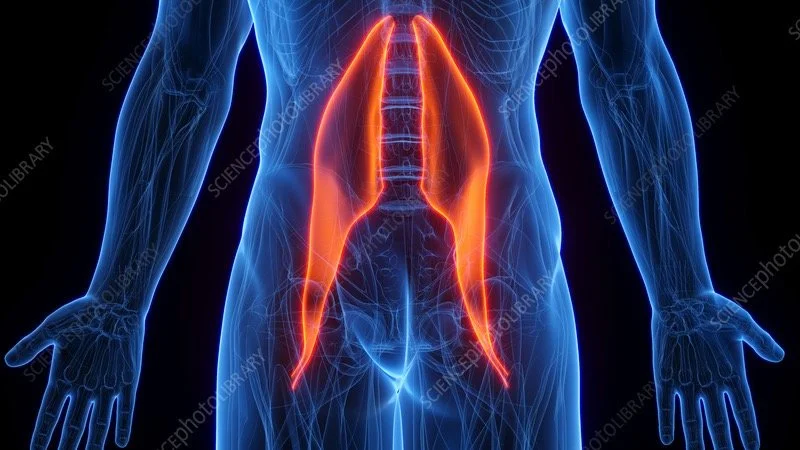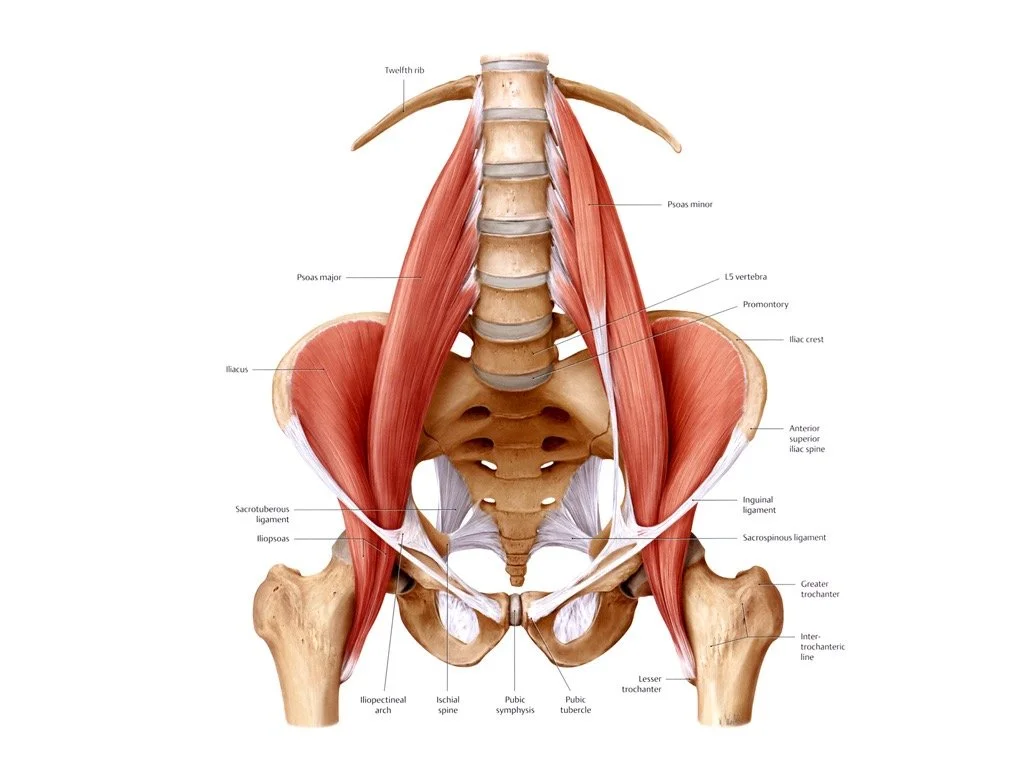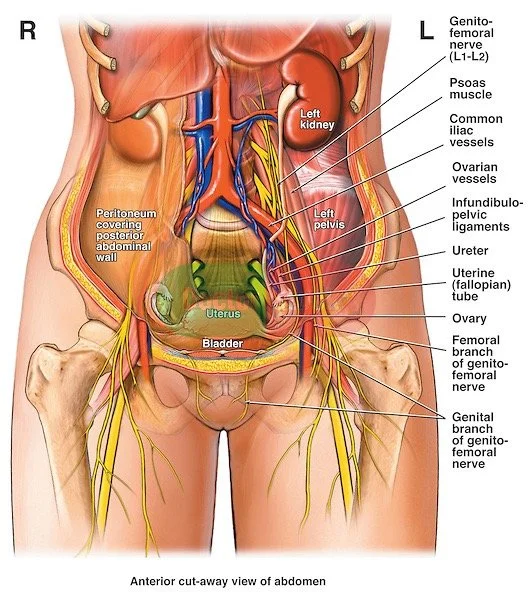In Focus: The Psoas, Part 1: The Anatomy
The psoas (SO-as) muscle is a vital yet often overlooked muscle that plays a significant role in our body’s movement and stability. Connecting the torso to the legs, it consists of the psoas major and psoas minor. These muscles are a part of our hip flexors. The psoas is complex and made up of slow and fast twitching muscles. It is an often-misunderstood muscle, but imbalance in the psoas can cause overstrain and injury in surrounding muscles and anatomy. The psoas is the only muscle that connects the top and bottom half of the body! The psoas major connects in the lower spine from the 12th thoracic, to the 5th lumbar vertebrae of the spine. It then crosses along the front of the pelvis, to connect under the head of the femur (the lesser trochanter). The psoas minor, while smaller and present only in some individuals, helps with lumbar flexion. Understanding the anatomy of the psoas is important as it influences both athletic performance and everyday activities. A well-functioning psoas helps promote efficiency in movement, while preventing injury.
The psoas muscle is essential for hip flexion, allowing us to move our legs forward, and plays a key role in stabilizing the spine and maintaining posture. It also assists in activities such as walking, running, and climbing. The psoas muscles support your internal organs and work like hydraulic pumps, allowing blood and lymphatic fluid to be pushed in and out of your cells. They are vital not only to your structural well-being but also to your psychological well-being because of their connection to your breath. Two tendons for the diaphragm (called the crura) that extend down and connect to the spine alongside where the psoas muscles attach. One of the ligaments (the medial arcuate) wraps around the top of each psoas. Also, the diaphragm and the psoas muscles are connected through fascia that also connects the other hip muscles. These connections between the psoas muscle and the diaphragm literally connect your ability to walk and breathe and also how you respond to fear and excitement. When you are startled or under stress, your psoas contracts. In other words, your psoas has a direct influence on your fight-or-flight response! Despite its importance, many people are unaware of their psoas muscles or how it functions. Common issues related to an imbalanced psoas include lower back pain, hip discomfort, and poor posture. Stretching and strengthening the psoas can alleviate many of these problems and enhance overall mobility.
5 Ways to Assess Muscular Balance in the Psoas
Observe Posture: Stand in front of a mirror and assess your posture. If one side of your pelvis appears higher or your spine shows a noticeable curve, it may indicate a tight psoas on one side, leading to muscular imbalance.
Hip Flexor Stretch: While kneeling on one knee, try to engage and stretch the opposite leg. If you feel a significant difference in flexibility or tension between the two sides, it may indicate imbalances in the psoas muscle.
Leg Raise Check: Lie on your back with both legs extended. Raise one leg slowly while keeping the other flat on the ground. If you notice difficulty or significant differences in range of motion between the two legs, this may highlight psoas imbalance.
Standing Single-Leg Balance: Stand on one leg and see how long you can maintain balance. If you struggle to keep stable on one leg compared to the other, it could be a sign of tightness or weakness in the corresponding psoas.
Pelvic Tilting: Lie on your back with knees bent and feet flat on floor. Gradually tilt your pelvis backward and forward. Notice if there is a difference in ease of movement; discrepancies might reflect psoas tightness or weakness.
The psoas muscle is not just a structure for hip flexion; it is integral to our overall well-being. By understanding its anatomy and assessing muscular balance, individuals can take proactive steps toward improved posture, reduced pain, higher life-quality, and enhanced athletic performance. Stay tuned for the next blog in this series, where we will discuss how to strengthen and stretch the psoas for optimal health and function.
Please feel free to leave comments and questions below. Next week I will be posting part 2 of the In Focus: The Psoas, Stretching and Strengthening to Prevent Injury.




